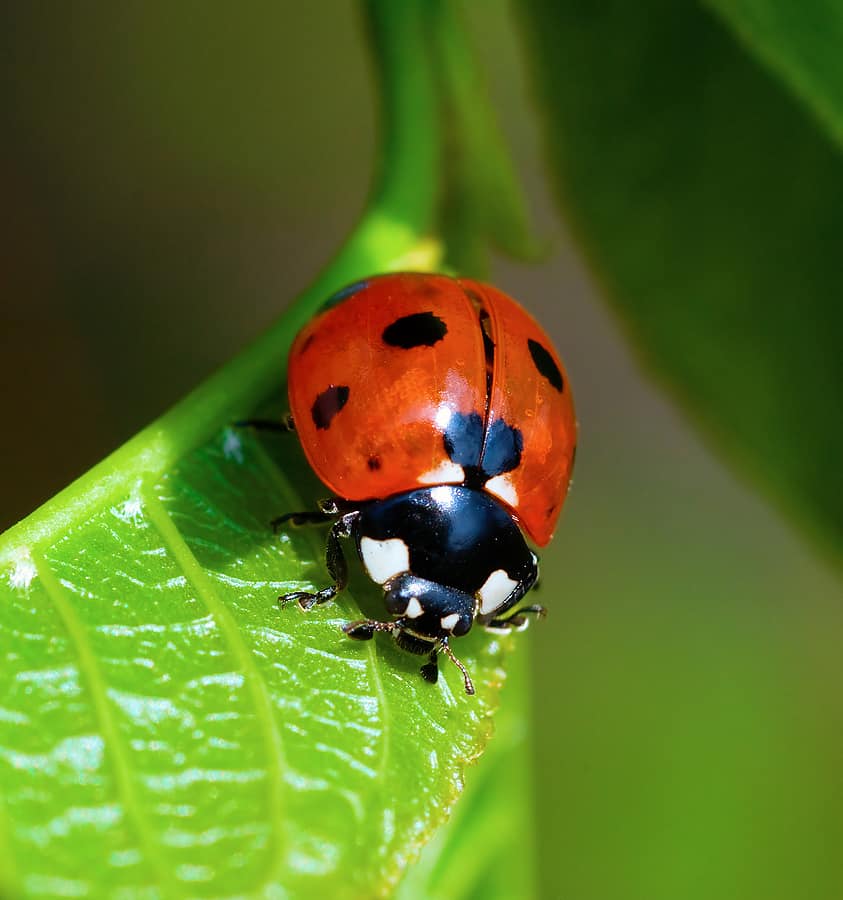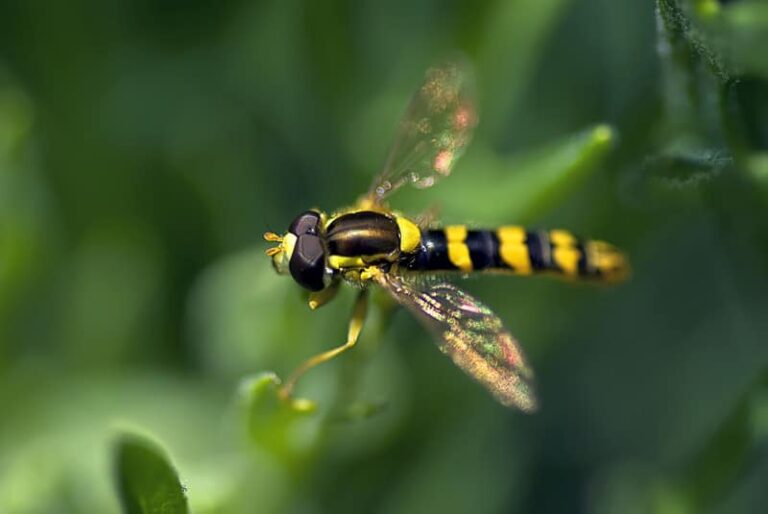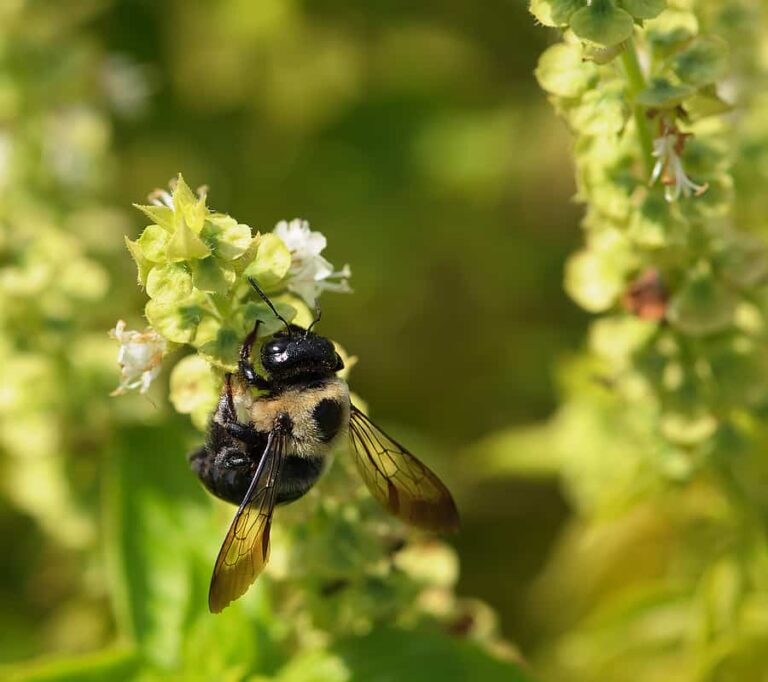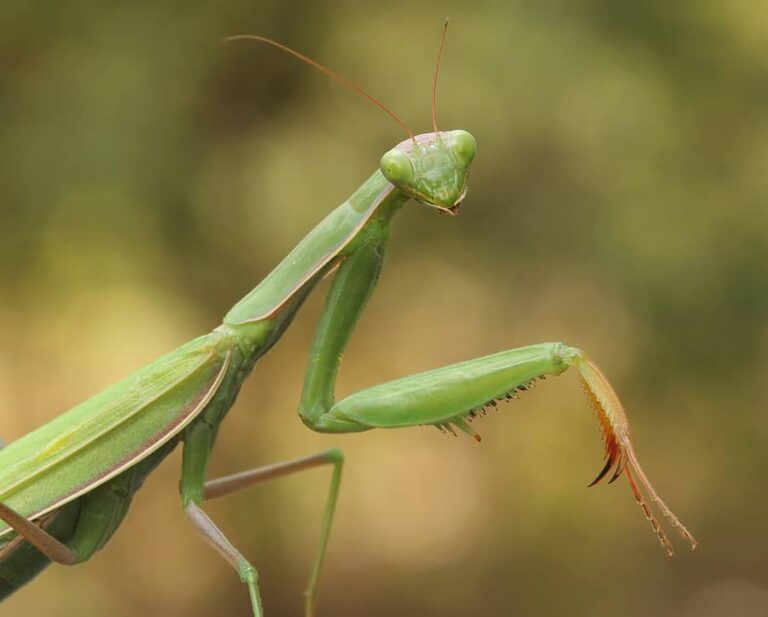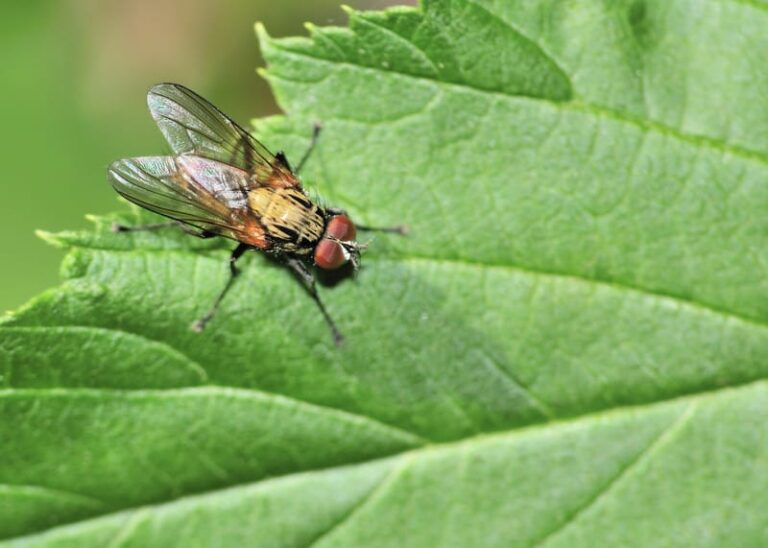Ladybug Beneficial Insect
Ladybugs are beneficial insects. Ladybugs are also known as lady beetles.
Adult and young ladybugs also eat asparagus beetle larvae, Colorado potato beetle larvae, lace bugs, mealybugs, Mexican bean beetle larvae, scale, spider mites, whiteflies, and the eggs of several insects. One ladybug can eat 5,000 pest aphids in its lifetime.

The ladybug is also called the lady beetle and the ladybird beetle.
Ladybugs consume pollen and nectar in addition to pest insects.
The ladybug belongs to the scientific family Coccinellidae. There are more than 450 species of ladybugs throughout North America.
There are about 4,000 species of lady beetles worldwide. Perhaps the best known is the Convergent Lady Beetle (Hippodamia convergens) which is an important biological control for gardens and orchards and is commonly sold commercially to gardeners.
Several hundred lady beetles are sufficient to rid a modest garden of insect pests. About 1,000 lady beetles can rid an acre of most soft-bodied insect pests.
How to identify the ladybug
Ladybugs are about ¼ inch long. They have round bodies with black spots on bright orange to red wing covers. The number of spots varies with the species of ladybug. The head and legs are black.
Ladybug larvae resemble miniature alligators. They are black with reddish markings, about ¼ inch long. Ladybug larvae can eat 40 aphids in an hour.
Adults
Adult lady beetles are shiny and round from 1/16 to 3/8 inch long with short legs and antennae. Common species are pale yellow to dark reddish-orange with or without circular black spots on the wing covers; some species are solid black or black with red spots. Thoracic lines for commonly used for field identification.
The often photographed convergent lady beetle is ¼ inch long, orange or red usually with 12 black spots and black thorax (the second body segment behind the head and before the abdomen) with two converging white stripes or lines on the thorax. The convergent lady beetle should not be confused with the Mexican bean beetle which is yellowish-brown and has 16 black pots on its wing cover.
Larva
Lady beetle larvae are black, spindle-shaped, alligator-like in appearance with knoblike projections but no other conspicuous markings when they emerge from their eggs. The larvae develop orange markings on the third, fourth, and fifth abdominal segments as they mature. Larvae eat 300 to 400 aphids and molt three times to a pupa stage that comes between the larva and adult stages. Adults emerge from the pupa stage in 5 to 7 days. The cycle from egg to adult takes about one month during spring and slightly less in summer.
Eggs
Lady beetle eggs are white or yellow ovals usually deposited in upright clusters from spring to late fall. Eggs are laid in groups of 5 to 50 on the underside of leaves. In warm weather, eggs hatch in about three to five days.
Ladybug feeding habits
Lady beetles in their larval and adult stages eat aphids, mealy bugs, soft scales, psyllids (jumping plant lice), whiteflies, mites, and other pest insects. One lady beetle can eat nearly 1,000 aphids in its lifetime.
Lady beetles are opportunistic feeders; they prefer to feed on large aphid populations but do not always stay around until the last aphid is gone. Lady beetles will move on to larger aphid colonies to continue feeding. Lady beetles also feed on plant pollen and nectar flowers and leafy weeds such as dandelions, wild carrots, and yarrow. If contained in a greenhouse, lady beetles should have access to simulated honeydew nectar such as a yeast-sugar mixture.
Ladybug lifecycle
The lifecycle of a ladybug—from egg to adult—lasts 5 to 7 weeks. There are one to several generations of ladybugs per year depending on the species.
Ladybugs overwinter as adults in tree bark and garden litter.
Lady beetles lay eggs in early spring. Eggs hatch in 3 to 5 days producing larvae that feed for 2 to 3 weeks and then pupate. Adults emerge in 7 to 10 days and feed through the fall, then either lay eggs and die or hibernate over winter emerging in spring to deposit eggs and die.
Many lady beetle species fly hundreds of miles to hibernate at higher elevations in winter. Most of the year lady beetles are in a quiescent state congregating in large aggregations near creeks or water during the summer and in trees and tall plants at higher elevations in fall and winter. Lady beetles feed little when aggregated living off of fat stored during the spring feeding phase. Adult lady beetles feed on 200 to 500 medium-sized aphids before aggregating.
How to attract ladybugs to the garden
Attract and sustain ladybugs in your garden by planting pollen- and nectar-producing plants such as cilantro, dill, fennel, oregano, thyme, yarrow, Queen Anne’s Lace, Coreopsis, bugleweed, and butterfly weed.
Ladybug coverage and release
Lady bugs will remain in a garden if there is enough food to sustain them. If there is not enough food—aphids or other soft-bodied pests, they will fly away or aggregate. Hibernating lady beetles released into a garden will not feed until they have burned off the fat they stored before hibernating.
If you purchase lady beetles that have been refrigerated and are hibernating, release a few dozen at a time allowing them to find food. If you release several hundred at once, they are likely to simply fly away.
The best time to release lady beetles into the garden is late in the afternoon or at sundown; this will encourage them to stay for the night and find suitable food and protection. Dampen the ground or plants before releasing lady beetles, this will encourage them to stay and drink water.
Release lady beetles at the base of plants; their instinct is to climb the nearest plant and hunt for food. Release groups of lady beetles 20 feet apart or more so that they can hunt for food.
About 1,000 lady beetles will rid an acre of ground of most soft-bodied pests.
Related articles:
Vegetable Garden Beneficial Insects
Vegetable Garden Organic Pest Control
Vegetable Garden Diseases Problem Solver
Vegetable Garden Organic Weed Control
Garden Planning Books at Amazon:
- Vegetable Garden Almanac & Planner
- Kitchen Garden Grower’s Guide Vegetable Encyclopedia
- Vegetable Garden Grower’s Guide
- Tomato Grower’s Answer Book

